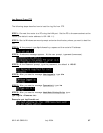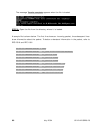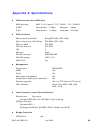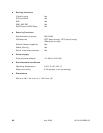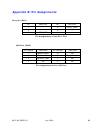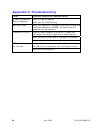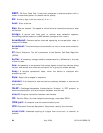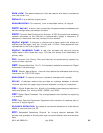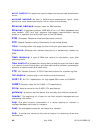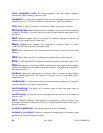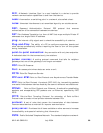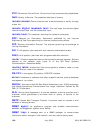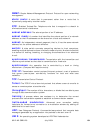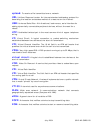6212-A2-GB20-20 July 2004 99
NIC: A Network Interface Card is a card installed in a device to provide
network communication capabilities to and from that device.
node:
A connection or switching point in a network, also called a host.
noise: Unwanted interference to a transmitted signal by an outside source.
PAP: Password Authentication Protocol. PPP protocol that ensures
authentication of the connection between two devices.
PAT: Port Address Translation is a form of NAT that maps multiple Private IP
addresses to a single Public IP address.
ping: An internet utility signal sent to check the accessibility of a device.
Plug-and-Play: The ability of a PC to configure expansion boards and
other devices automatically without requiring the user to turn off the system
during installation.
point-to-point connection:
Any connection with only two endpoints.
A dedicated data link that connects only two stations.
poison reverse: A routing protocol command that tells its neighbor
gateways that one of the gateways is no longer connected.
POP: Point Of Presence.
Port: An access point where data can enter or exit.
POTS: Plain Old Telephone Service.
PPP over ATM: Point-to-Point Protocol over Asynchronous Transfer Mode.
PPP: Point-to-Point Protocol. A protocol (RFC 1661) for transmitting packets
over serial links between devices made by the same or different manufacturers.
PPPoE: Point-to-Point Protocol over Ethernet. A method for establishing
sessions and encapsulating PPP packets over an Ethernet, specified by RFC
2516.
PPTP: Point-to-Point Tunneling Protocol. An extension of Point-to-Point
Protocol used to create virtual private networks between PCs.
protocol: A set of rules that govern the transmission of data between
interconnected devices to maintain or improve communication.
proxy server: Provides a list of items available on other servers to increase
the availability and speed of retrieving that information.
PSTN: Public Switched Telephone Network. The standard telephone network.



